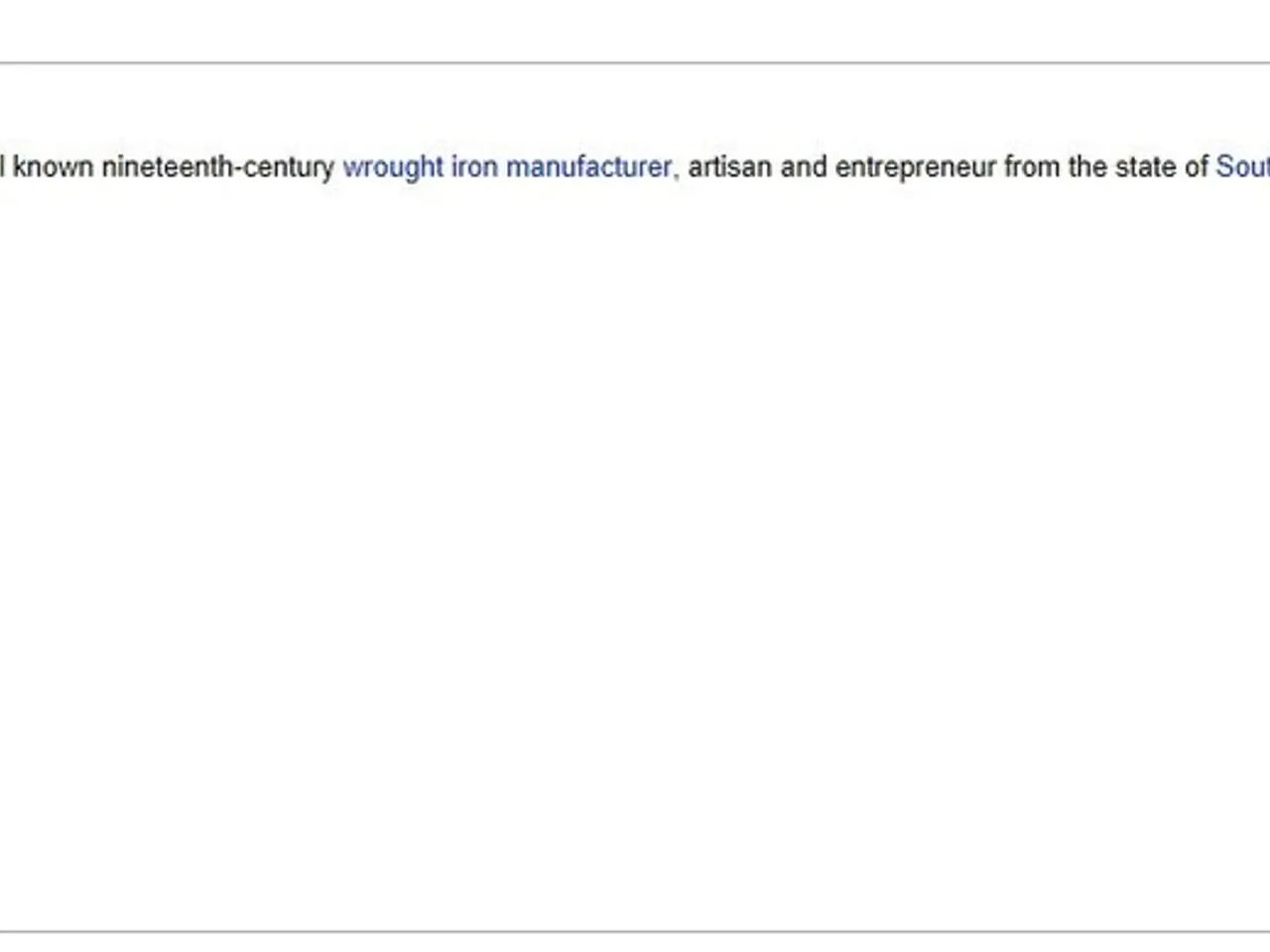Renowned Scientific Figure: Lord Ernest Rutherford
In the picturesque town of Nelson, New Zealand, a young Ernest Rutherford was born in 1871. This humble beginning would set the stage for one of the most groundbreaking careers in the realm of nuclear physics and atomic theory.
Rutherford, renowned as New Zealand's most famous scientist, made significant strides in our understanding of the atomic structure. His pioneering work not only advanced scientific theory but also paved the way for nuclear technology.
One of Rutherford's most notable achievements was the discovery of two types of radiation—alpha and beta—emanating from uranium. By distinguishing their properties and effects on surrounding air, he laid the groundwork for future research in radioactivity [5].
Another milestone in Rutherford's career was the famous gold foil experiment, which demonstrated that atoms consist mostly of empty space with a tiny, dense, positively charged nucleus at the center. This experiment, carried out by students under his instruction at the University of Manchester, replaced the earlier "plum pudding" concept with the nuclear model of the atom [1][3].
In 1919, Rutherford made history by demonstrating the first artificial nuclear reaction. By bombarding nitrogen with alpha particles, he produced oxygen, opening the field of nuclear transmutation and eventually leading to nuclear energy applications [1].
Rutherford's nuclear atom model, which depicted electrons orbiting the nucleus much like planets orbit the sun, formed the foundation for quantum mechanics [1][3].
For his exceptional work in investigating radioactive disintegration and the chemistry of radioactive substances, Rutherford was awarded the Nobel Prize in Chemistry in 1908 [3][5].
Throughout his career, Rutherford held prestigious positions such as president of the Royal Society and was honoured with the Order of Merit and peerage as Lord Rutherford of Nelson [3].
Rutherford's influence extended far beyond the scientific community, as he collaborated and taught many other eminent scientists. Some of his collaborators, such as Frederick Soddy, John Cockcroft, James Chadwick, and Cecil Powell, went on to win Nobel Prizes [1].
Chadwick, for instance, discovered the neutron under Rutherford's guidance at the University of Cambridge in 1932 [1].
In addition to his scientific accomplishments, Rutherford is internationally recognized as the 'father of nuclear physics.' The Geiger-Marsden or 'gold foil' experiment, carried out under his instruction, is still remembered as a pivotal moment in the history of science [1][3].
Rutherford's ashes were buried in the nave of Westminster Abbey, close to the tombs of Sir Isaac Newton and Lord Kelvin, a testament to his lasting impact on the scientific world [1].
Ernest Rutherford died in Cambridge in 1937 at the age of 66. To honour his contributions, Rutherfordium (symbol Rf and atomic number 104) was named in his honour, making him the only New Zealander to have an element named after him [1].
The Rutherford Medal, the highest science medal awarded by the Royal Society of New Zealand, bears testament to Rutherford's enduring legacy. For those interested in learning more about this remarkable scientist, additional resources, including a short movie and detailed biographies, can be found on Dr John Campbell's website and National Geographic [1].
The design of the New Zealand $100 note features a graph plotting the results from Lord Rutherford's investigations into naturally occurring radioactivity, further immortalizing his contributions to science [1].
As we reflect on Rutherford's life and work, it is clear that his groundbreaking discoveries and pioneering spirit have left an indelible mark on the world of science and technology, making him truly a scientist for the ages.
References: [1] BBC - History - Ernest Rutherford [3] Britannica - Ernest Rutherford [5] NobelPrize.org - The Nobel Prize in Chemistry 1908 [1] New York Times - Ernest Rutherford, Who Proved the Structure of the Atom, Dies [1] Royal Society of New Zealand - Rutherford Medal [1] Dr John Campbell's website [1] National Geographic - Ernest Rutherford: The Father of Nuclear Physics
Science and medical-conditions intersect significantly in the context of Ernest Rutherford's work, as his discoveries in radioactivity and atomic structure paved the way for understanding various medical conditions related to radiation exposure.
Moreover, by furthering our understanding of atomic structure through pioneering experiments such as the gold foil experiment, Rutherford helpingly laid the foundation for the technology behind modern nuclear medicine.




